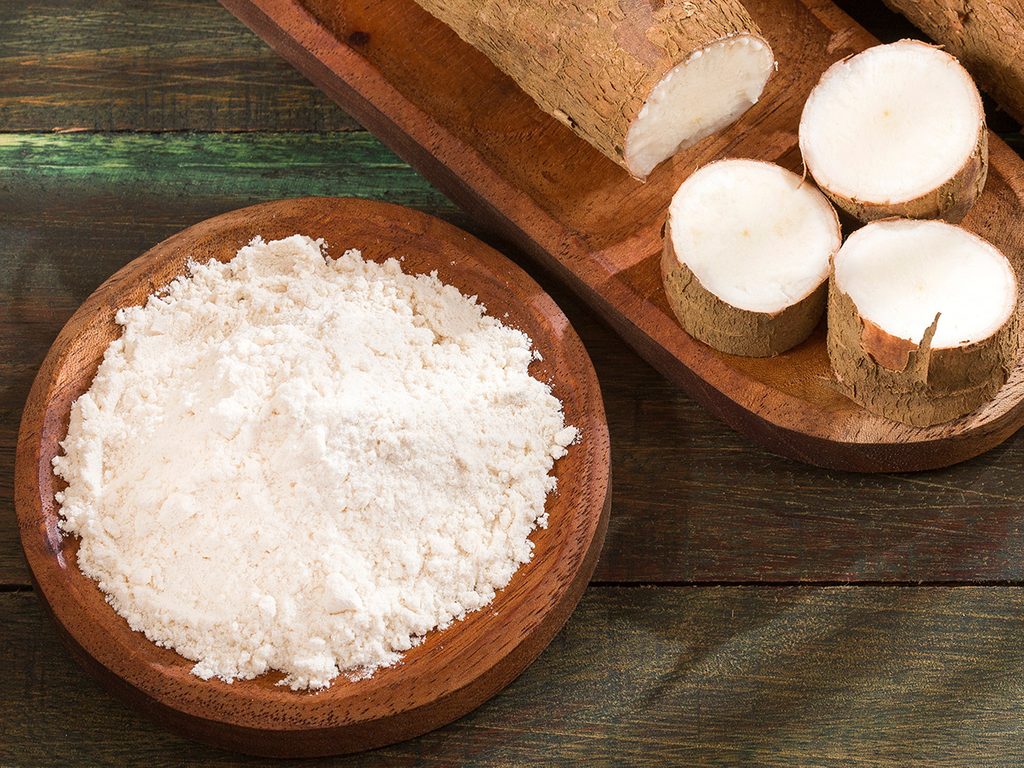Cassava Flour Is Grain-Free, Nut-Free and Nutritious—Here’s What Else You Need to Know

Here's why you may want to try baking with Cassava flour.
Have you heard of cassava yet? If you’ve hopped on the paleo train you likely have, as it falls into the grain-free paleo-party category. Cassava, a fibrous woody shrub native to South America, goes by a few names, including yuca and manioc. If you’re thinking, cassava smassava, I’ve never eaten that and don’t plan to, I’m guessing you have and didn’t know it. If you’ve eaten any gluten-free bread or crackers, or indulged in the aughts trend of bubble tea, you probably have. So let’s dig in on why this is a root worth knowing.
What Is It:
The part of the cassava that we consume is the tuberous root. Some varieties are more bitter tasting than others, and all require specific processing to reduce the inherent toxicity in the plant. Yes, poorly processed cassava roots contain a substance that, when eaten, can trigger the production of cyanide…but stay with me. Because of its ability to grow in poor soil, cassava is a staple food around the world for 800 million people. There are various ways to prepare and consume it, including boiling the sweeter varieties like you would a potato, and drying it out to make a crunchy condiment. In Canada, most of us enjoy cassava in flour form, usually in grain-free and paleo friendly baked goods.
If you’ve ever eaten gluten-free baked goods, you may have noted tapioca on the ingredient list. It’s a concentrate of the starch from cassava, and is often used in place of gluten to help gluten-free baking hold together. Remember that bubble tea I mentioned? The little balls are made from tapioca.
Why It’s Awesome:
Cassava (and tapioca) is exceptionally easy to bake with, as far as grain-free flours go. Because of its high starch content, it holds together well, a rare feature in a grain-free flour (coconut flour basically requires a dozen eggs to be baked into anything).
From a health perspective, Cassava is a source of resistant starch, a form of insoluble fibre that doesn’t break down through normal digestion, but passes into the colon where it ferments. This has been shown to improve the intestinal microflora balance, supporting improved digestion and immune health. Where many flour-based treats can further an imbalance in the gut, cassava can help reverse that. Cassava is also rich in potassium and vitamin C.
One thing to note: cassava is predominantly starch, so it could impact your blood glucose levels. If you’re sensitive to fluctuations, you’ll want to mind how much you eat at one time.
How To Best Use It:
You can buy cassava flour and tapioca starch widely now, and experiment with using it in your favourite baked foods. Cassava makes deliciously pliable flat breads (think of corn tortillas only using cassava flour), crackers, and I’ve even used it in sourdough bread. Tapioca starch is a great option to have on hand to bake gluten-free cakes and cookies. One of my favourite ways to enjoy cassava is in the form of a tapioca crepe or wrap. We enjoy them here in Toronto at farmer’s markets where @TapiocaToronto sells some of the best tapioca and cassava goodies around.
Meghan Telpner is a nutritionist and an author. Get certified as a culinary nutrition expert with Meghan at the Academy of Culinary Nutrition.
Next, check out other healthy flours to make with now.




